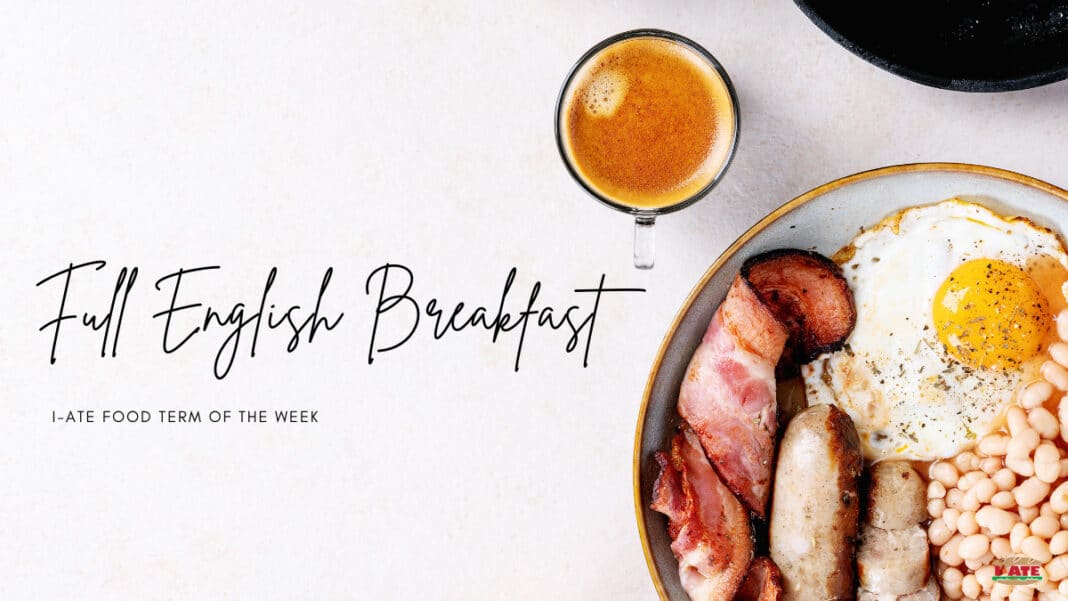One of the most popular dishes in Britain is the traditional Full English breakfast, also known colloquially as a “Fry-up”. Its origin dates back to the early thirteenth century and is still a national institution today. The tradition began with the gentry (high social class) and was later adopted by the Victorians. The Edwardians standardised the typical ingredients that we know today.
The English gentry and their lavish breakfast feast
The gentry was a distinct social class of aristocrats, landowners and “genteel” families, the privileged layer of society. This class wanted to keep the culture, cuisine, values and practices of the Anglo-Saxon country lifestyle alive as they considered themselves true heirs to the Anglo-Saxons. Breakfast was considered the most important meal of the day and was a social event, also eaten after weddings as these took place in the morning. Anglo-Saxon hospitality was upheld and friends, relatives, neighbours and visitors passing through would be invited to indulge in the lavish meal, keeping them going after a house party evening, a hunt or before a long journey. The gentry would use the opportunity to display their wealth on the breakfast table including the silver and glassware to impress. This was the beginning of the traditional full English breakfast.
The Victorian tradition and the rise of the middle class
When Queen Victoria ascended the throne, the gentry was a social class in decline. A new wealthy class was on the rise formed of merchants, industrialists and businessmen (later evolving into the middle class). The newly rich people aspired towards the gentry, studied their habits and traditions, and adopted the English breakfast as a social event to demonstrate their newly acquired wealth. The Victorians developed the gentry’s breakfast into an art form. Its presentation became an elegant and refined affair.
The golden Edwardian age of long breakfasts and parties
During this age, the first meal of the day became a standard at bed and breakfasts and hotels. The ingredients became standardised: British sausage, back bacon, egg, black pudding, baked beans, fried bread and toast, grilled tomato, served with tea or coffee and orange juice. Jams and marmalades were also included. It evolved into a family meal, eaten on a regular basis.
The peak of the cooked Full English in the 1950s
During this time, the breakfast spread from the middle class to the working class and turned into the national dish. The manual labour and long working hours in the factories meant a filling meal in the morning necessary to fuel for the day.
The ingredients may vary depending on the region in Great Britain. You would find black pudding in the North of the country more often than in the South. In some areas, you would find hash browns as an additional ingredient. However, some people frown upon this addition due to the fact that it is believed to be a cheap plate filler and deem it as not traditional or even disrespectful.
The pork meat is traditionally sourced from local farmers and sausages are made using local recipes. The most famous sausage producing regions are Cumberland and Lincolnshire. In Scotland, a slice of haggis might replace the black pudding. The full Irish breakfast, the Ulster Fry, usually contains white pudding, Irish potato cake and soda bread. In Wales, you might find a so-called “barra lawr”, a laverbread made from seaweed in your “brekkie”.
This substantial meal is not only eaten in the morning. It can be eaten at any time and is more than a national dish. It is deeply rooted in the British culture. Nowadays you will sometimes find an “all day breakfast” in the menu in cafes and pubs.
References:
Historic UK. 2021. Traditional English Breakfast. [ONLINE] Available at: https://www.historic-uk.com/CultureUK/Traditional-English-Breakfast/. [Accessed 4 March 2021].
English Breakfast Society. 2021. Full English Breakfast. [ONLINE] Available at: https://englishbreakfastsociety.com/full-english-breakfast.html. [Accessed 4 March 2021].
Breakfast London. 2021. The history of the Full English Breakfast. [ONLINE] Available at: https://www.breakfastlondon.co.uk/2019/12/the-history-of-the-full-english-breakfast/. [Accessed 4 March 2021].

Written by Victoria Milhan, Schuman Communication Trainee Terminology Coordination Unit. She holds master’s degrees in English Language (linguistics) and Medieval English Literature, Newer English Literature and Celtic Studies. Victoria is enrolled as a PhD student at Bonn University in Germany.

